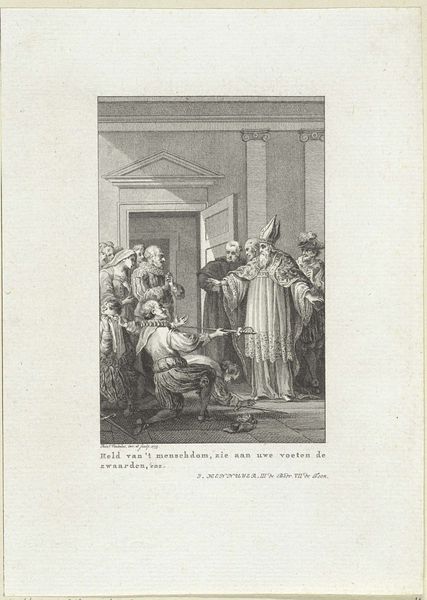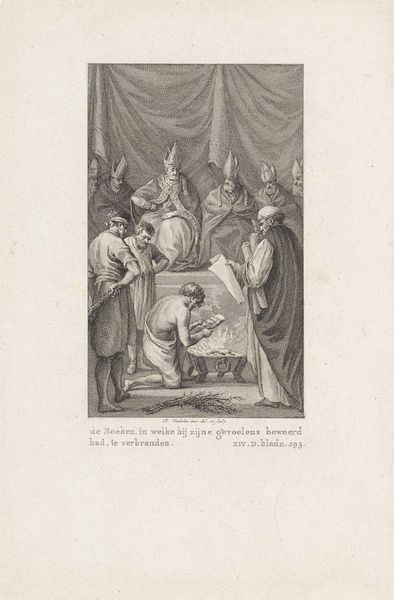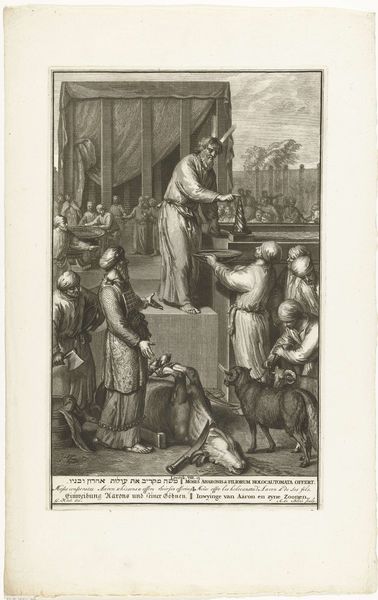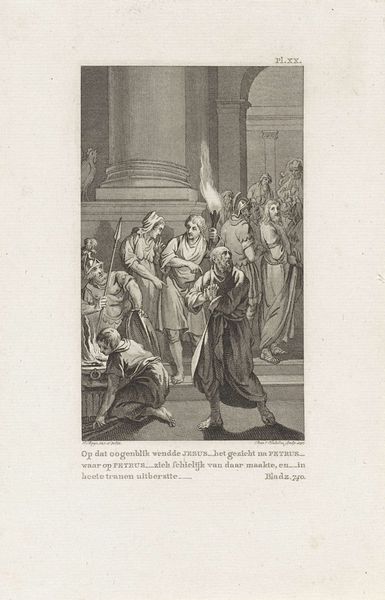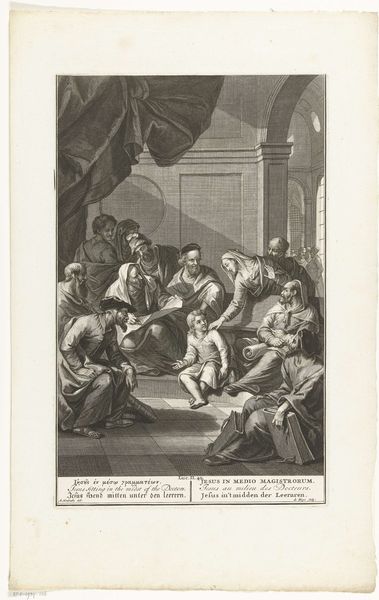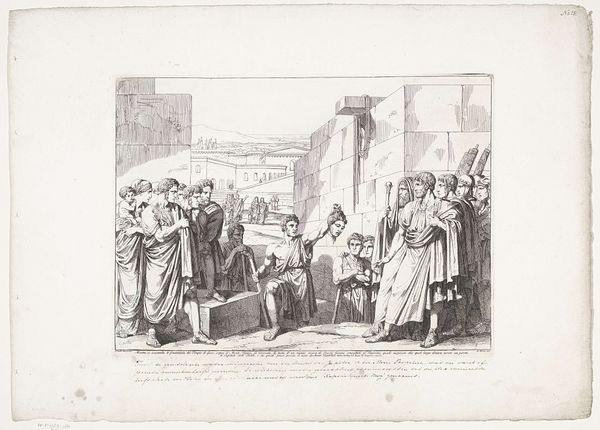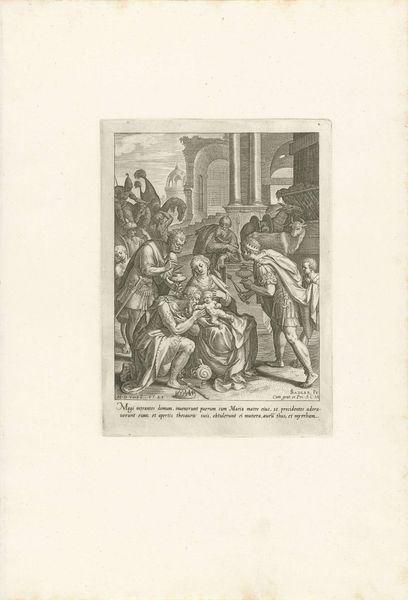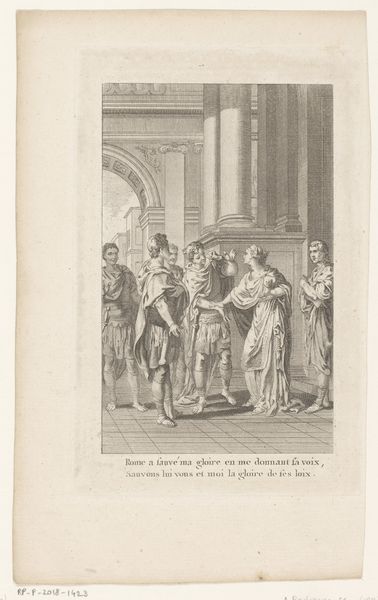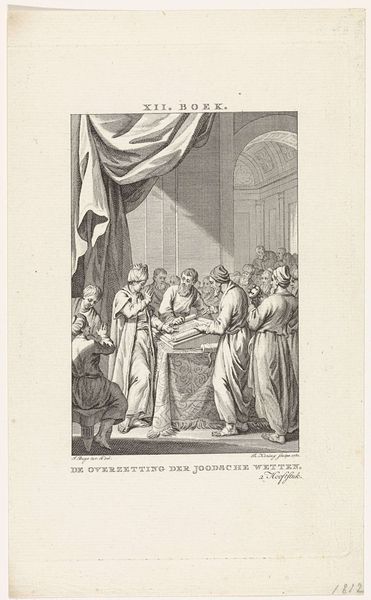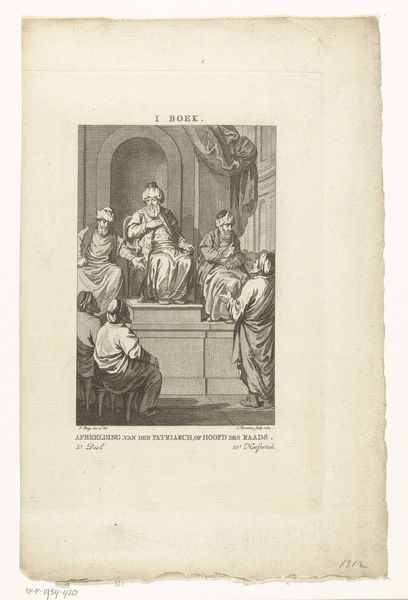
engraving
#
baroque
#
old engraving style
#
figuration
#
history-painting
#
engraving
Dimensions: height 355 mm, width 225 mm
Copyright: Rijks Museum: Open Domain
Curator: We’re standing before François van Bleyswijck's "Christus en de overspelige vrouw," an engraving dating sometime between 1681 and 1728, now residing here at the Rijksmuseum. Editor: What strikes me first is the intense drama captured in such a rigid, almost mathematical medium. You have this almost theatrical composition, with all the figures tightly packed. Curator: Indeed, it's Baroque in its sensibility, with the central figures bathed in light, directing our gaze. The artist uses precise lines to render texture, emotion, and the weighty presence of the architecture around them. One could easily get lost following the patterns of that marbled floor! Editor: True, and it is intriguing to consider how such a detailed scene comes together, thinking about the process itself; all those individual, precise marks laid down in a time-consuming manner. One also ponders who exactly was producing the paper it's printed on, or what that laborer may have thought of religious scenes such as this, far removed from the art world that framed it. Curator: That labor creates a potent story. Look at the scroll held before Christ; it signifies law and judgment, while his outstretched hand is one of clemency. Van Bleyswijck masterfully portrays that tension and choice. It’s deeply moving, thinking of it etched into metal, then transferred to paper—a process mirroring the permanence of judgment, versus the fleeting nature of human error and redemption. Editor: Absolutely. The print allows us to connect the moment of making to an enduring tale, considering its production embedded within a complex world of tradespeople and artisans. It forces us to see beyond art history's typically elevated discourse and ask practical questions regarding social class and everyday consumption. Curator: That material connection offers a different window into this pivotal biblical scene. What appeared as an isolated historical moment now gains resonance, thanks to this unique lens we’ve been gifted through process and labor, creating new opportunities to recontextualize stories and beliefs. Editor: I couldn't have said it better. It also highlights engraving’s technical sophistication— elevating, I would suggest, its status as an integral method in art production.
Comments
No comments
Be the first to comment and join the conversation on the ultimate creative platform.

